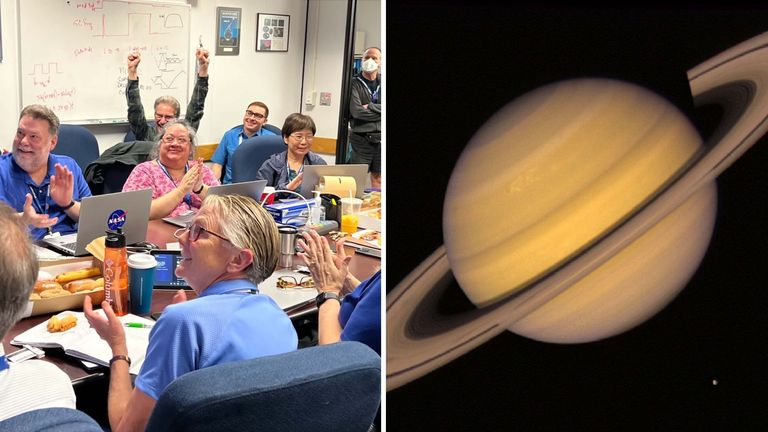NASA’s longest-running spacecraft Voyager 1 is sending information back to Earth again for the first time since November.
Scientists have managed to fix a problem on the probe, which was launched 46 years ago, after five months of silence.
On 14 November last year, Voyager 1 stopped sending usable data back to Earth, even though scientists could tell it was still receiving their commands and working well otherwise.
It was first launched alongside its twin, Voyager 2. The pair are the only spacecraft to ever fly in interstellar space, which is the space between stars.
The Voyager probes send back never-seen-before information about our galaxy. Since they blasted off in 1977, they have revealed details in Saturn’s rings, provided the first in-depth images of the rings of Uranus and Neptune and discovered the rings of Jupiter.
Although their cameras are switched off to conserve power and memory, they are still sending back information that would be impossible to get anywhere else.
With all this data stuck onboard and the spacecraft more than 15 billion miles from Earth, NASA scientists needed to fix the problem remotely.
The team at NASA’s Jet Propulsion Laboratory in California confirmed in March that the issue was with one of Voyager 1’s three onboard computers. That computer, called the flight data subsystem, is responsible for packaging the data up before it is sent back to Earth.
Within the computer, a single chip containing some of the computer’s software code had stopped working. Without that code, the data was unusable.
The engineers couldn’t pop over and fix it. Instead, on 18 April, they remotely split the code across different parts of the computer.
Then they had to wait to see if their fix had worked.
It takes around 22-and-a-half hours for a radio signal to reach Voyager 1 and another 22-and-a-half hours for a response to come back.
On 20 April, the team got good news. For the first time in five months, they were in contact with Voyager 1 again and could check the health and status of the spacecraft.
Now, they’ll adjust the rest of the computer so it can begin sending back more data.
Voyager 2 is working normally and heading towards a star called Ross 248. It’ll come within 1.7 light years of it in around 40,000 years.
Voyager 1 will almost reach a star in the Little Dipper constellation in 38,200 years from now.

